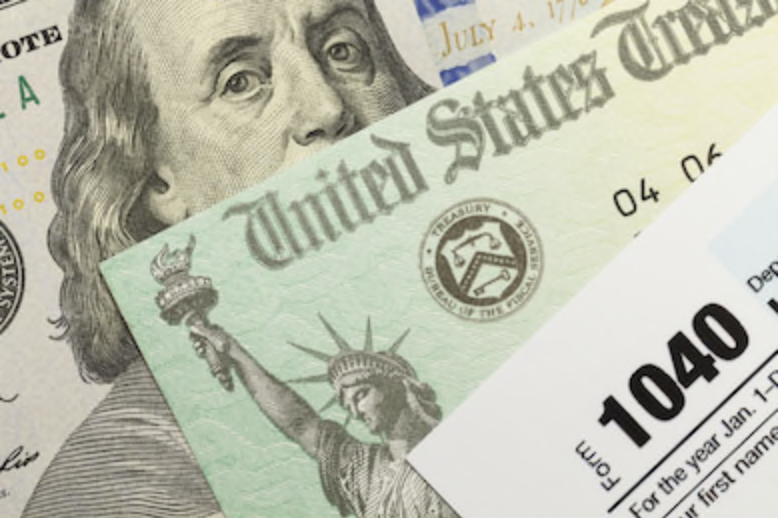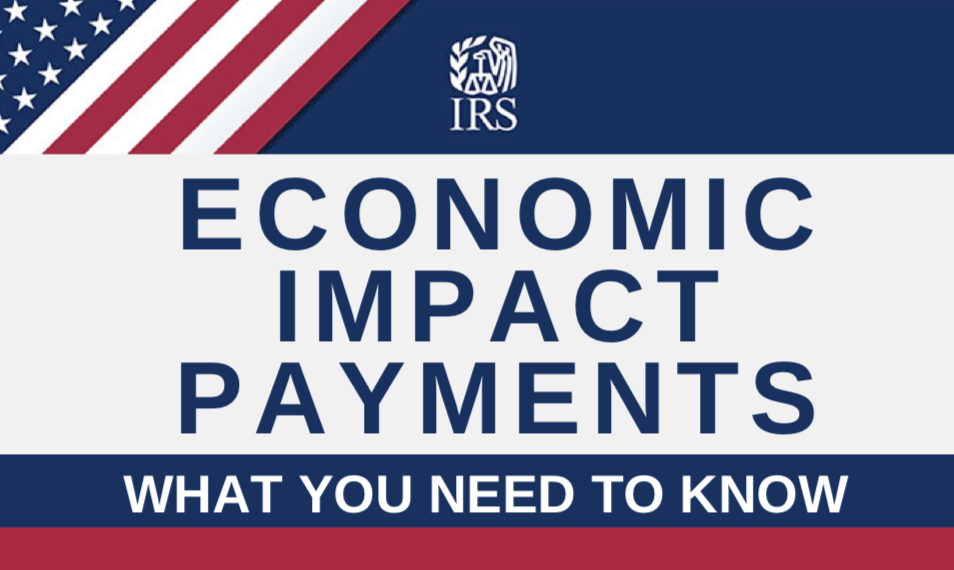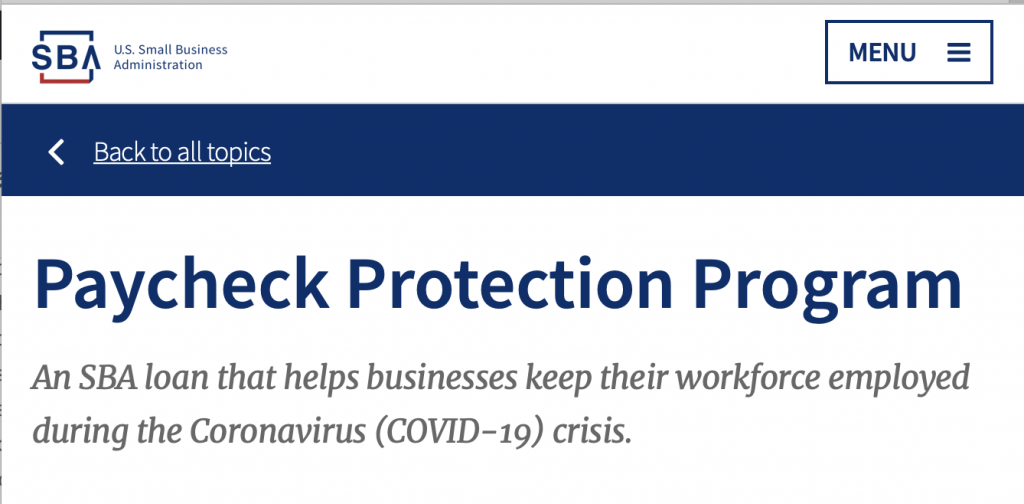With the passing of the CARES Act, it is the largest economic relief bill in U.S. history and will allocate $2.2 trillion is support to individuals and businesses affected by the pandemic and economic downturn. I’m going to try and touch upon those with the most impact.
Individual provisions
Federal individual tax returns have been automatically extended from April 15 to July 15. This includes filing AND payment. Furthermore, April 15 estimated tax payments have also been extended to July 15. June 15 estimated tax payments have not changed dates.
What exactly are the recovery rebates?
The recovery rebates are refundable tax credits. This means that the rebate decreases a taxpayer’s tax liability dollar-for-dollar, and the credit can be refunded to a taxpayer if they have no tax liability to offset.
The rebates are tax credits that will be applied to 2020 tax returns, but are advanced to taxpayers now based on their 2019 or 2018 adjusted gross income (AGI). The credit will be applied to 2020 tax returns using 2020’s AGI next spring, and taxpayers will receive the difference of the credit if it is in their favor.
For example, if a single taxpayer with no children made $200,000 in 2019, they would not receive an advance rebate based on their 2019 income. However, if they make $35,000 in 2020, they will receive a $1,200 refundable tax credit on their 2020 tax return. But in reverse, if a taxpayer had a $35,000 AGI in 2019 but has $200,000 AGI in 2020, they would receive a $1,200 rebate now and would not have to pay it back on their 2020 tax return.
How much of a rebate will I receive?
Individuals with a Social Security Number (SSN) and who are not dependents may receive $1,200 (single filers and heads of household) or $2,400 (joint filers), with an additional rebate of $500 per qualifying child, if they have adjusted gross income (AGI) under $75,000 (single), $150,000 (joint), or $112,500 (heads of household) using 2019 tax return information. (The IRS will use 2018 tax return information if the taxpayer has not yet filed for 2019.) The rebate phases out at $50 for every $1,000 of income earned above those thresholds.
Here is a link to determine how much of stimulus check to expect:
STIMULUS CHECK CALCULATOR
How do I get my rebate?
For most Americans, no action is required. The IRS will use data from the most current tax returns or Social Security data to provide a rebate to Americans either via direct deposit (if such information is available) or through a paper check in the mail to the last address on file.
U.S. Treasury Secretary Steven Mnuchin said he hopes to distribute rebates to taxpayers who e-filed with direct deposit banking information in three weeks. Taxpayers receiving rebate checks may have to wait six to eight weeks to receive a paper check in the mail.
Treasury will be developing a web-based portal for individuals to provide their banking information to the IRS online. Taxpayers will be able to receive payments immediately as opposed to checks in the mail.
Are the recovery rebates just an advance on the tax refund I would get anyway when I file my 2020 tax return?
No. The recovery rebates are an additional refundable tax credit that will be applied to 2020 tax returns, but estimates are paid out to taxpayers based on 2019 or 2018 adjusted gross income (AGI). This is an additional credit for the taxpayer on top of whatever refund or tax is owed for the 2020 tax year.
For example, imagine a single taxpayer with no children who made $35,000 AGI in 2019. This taxpayer will receive a $1,200 rebate now, and this rebate would also show up in the taxpayer’s 2020 tax return as a tax credit already received. If the taxpayer would be receiving a $500 tax refund based on their income tax withholding, they would still receive that $500 refund when they file their 2020 tax return.
Which dependents qualify for a rebate?
The CARES Act uses the Child Tax Credit (CTC) eligibility standards. All qualifying children who are under age 17 who have not provided for more than half of their own expenses and lived with the taxpayer for more than six months are eligible. This means that adult dependents, such as college students aged 17 and over, and elderly dependents do not qualify for the $500 rebate. Adult dependents do not qualify for their own rebate either.
Will those receiving Social Security benefits still receive a rebate check?
Yes, all taxpayers are eligible for the rebate, including those receiving Social Security benefits, subject to the same eligibility rules as other taxpayers. Treasury Secretary Mnuchin announced that these beneficiaries will not have to submit a separate tax return to receive a rebate. The payment will be sent directly to their bank account associated with those benefits.

Here are some easy to follow posters from IRS:
Penalty-free Retirement Distributions
- Certain taxpayers are permitted to withdraw up to $100,000 from a retirement plan or IRA for “coronavirusrelated distributions” without incurring the 10% premature distribution penalty under §72(t).
A coronavirus-related distribution includes a distribution:- Made after Jan. 1, 2020 and before Dec. 31, 2020.
- To an individual who is diagnosed the with virus SARS-CoV-2 or COVID-19 by a test approved by the Centers for Disease Control and Prevention.
- To a spouse or dependent of a person diagnosed with such virus by such a test.
- To persons who experience adverse financial consequences as a result of being quarantined, furloughed or laid off or having work hours reduced due to such virus or disease, being unable to work due to lack of child care due to such virus or disease, closing or reducing hours of a business owned or operated by the individual due to such virus or disease, or other factors as determined by the Secretary of the Treasury.
Temporary Waiver of Required Minimum Distributions (RMDs) RMDs required to be made or that begin in 2020 are waived. Calendar year 2020 is disregarded for distributions that are being made under the 5-year rule.
Expansion of Unemployment Benefits
- The size and scope of unemployment benefits is expanded under this bill. It includes relief for workers who are self-employed, as well as independent contractors. These changes are temporary.
Provides $250 billion to expand unemployment benefits - Makes sure self-employed and independent contractors, like Uber drivers and gig workers, can receive unemployment during the public health emergency. The bill also includes support to state and local governments and nonprofits so they can pay unemployment to their employees
- Makes benefits more generous by adding a $600/week across-the-board payment increase through the end of July. In addition, for those who need it, the bill provides an additional 13 weeks of benefits beyond what states typically allow.
- Unemployment insurance eligibility is expanded to those who are not eligible for regular compensation or extended benefits under state or federal law, or previously passed pandemic emergency unemployment compensation.
To qualify, an individual must self-certify that s/he is otherwise able and available to work but cannot for one of the following reasons:
- Diagnosis of COVID-19 or is experiencing the systems and seeking a medical diagnosis
- Member of household has COVID-19 • Individual is providing care for a family member or member of household who has been diagnosed with COVID-19
- Child or other person in household for whom the individual is the primary caregiver is unable to attend school or other facility because of COVID-19 and such attendance is necessary for that individual to attend work
- Individual is unable to reach place of employment because of mandatory quarantine
- Individual has been advised by a medical professional to self-quarantine due to COVID-19 concerns
- Individual was scheduled to start a job and doesn’t have a job or unable to reach job due to COVID-19
- Individual has become the primary source of income or major support for household due to head of household dying due to COVID-19
- Individual has quit job as a direct result of COVID-19
- Place of business is closed due to COVID-19
- Individual is self-employed, is seeking part-time employment, doesn’t have sufficient work history, or otherwise doesn’t qualify for regular unemployment or extended benefits
- This does not include individuals who can telework with pay or who are receiving paid sick leave or other leave benefits due to other provisions in COVID-19 relief.
This assistance is available beginning Jan. 27, 2020 and goes until Dec. 31, 2020 with a 39-week maximum for an individual receiving assistance.
The bill also allows for states to waive their one week waiting period for unemployment benefits and the federal government will reimburse them for that week, thus incentivizing states to provide an immediate benefit.
Business provisions
Employee Retention Credit
- Employers are provided a refundable payroll tax credit for 50% of wages paid to employees during the COVID-19 crisis. The credit is available to employers whose:
- Operations were fully or partially suspended due to a COVID-19-related shutdown order, or
- Gross receipts declined by more than 50% when compared to the same quarter in the prior year.
The credit is based on qualified wages paid to the employee. For employers with greater than 100 full-time employees, qualified wages are wages paid to employees when they are not providing services due to the COVID-19-related circumstances described above. For eligible employers with 100 or fewer full-time employees, all employee wages qualify for the credit, whether the employer is open for business or subject to a shut-down order.
The credit is provided for the first $10,000 of compensation, including health benefits, paid to an eligible employee. The credit is provided for wages paid or incurred from March 13, 2020 through Dec. 31, 2020.
Delay of Payment of Employer Payroll Taxes
- Employers and self-employed individuals can defer payment of the employer share of the Social Security tax they otherwise are responsible for paying to the federal government with respect to their employees. Employers generally are responsible for paying a 6.2% Social Security tax on employee wages.
The provision requires that the deferred employment tax be paid over the following two years, with half of the amount required to be paid by Dec. 31, 2021 and the other half by Dec. 31, 2022. The Social Security Trust Funds will be held harmless under this provision.
Small Business Loans
Here is a link to sba.gov detailing the Paycheck Protection Program:
The SBA is providing low-interest working capital loans of up to $2 million to small businesses and nonprofits affected by the coronavirus. These loans carry an interest rate of 3.75% for small businesses and 2.75% for nonprofits. Loan repayment terms vary by applicant, up to a maximum of 30 years.
As of March 23, businesses in every state plus American Samoa, Guam, the Northern Mariana Islands, Puerto Rico and the U.S. Virgin Islands can apply. the loan can be used to cover accounts payable, debts, payroll and other bills.
These loans can be forgiven. Loan recipients can calculate the amount to be forgiven by calculating the sum total of the following “costs incurred, and payments made” during the 8-week period beginning on the date of the covered loan origination:
- Payroll costs (defined later)
- Interest on mortgage obligation (which shall not include any prepayment of or payment of principal)
- Rent
- Utility payments
The total amount for forgiveness must not exceed the original principal amount. The amount of loan forgiveness can be reduced if the recipient reduces the number of employees or reduces salaries during the 8 weeks following the origination date.
Payroll costs are defined as the sum of all payments for:
- Salaries, wages, commissions, or similar compensation (up to $100,000 annual compensation as prorated for the covered period)
- Payment of cash tip or equivalent • Vacation, parental, family medical, or sick leave • Severance payment
- Health care benefits, including insurance premiums • Retirement benefits
- State or local tax assessed on said compensation
- Payments of wages, commission, or similar compensation to any independent contractors that is $100,000 or less per year (as prorated for the covered period). Payroll costs would not include:
- Federal income tax and payroll tax contributions
- Compensation of any employee whose principal residence is outside the US
- Qualified sick and family leave wages covered by tax credits under the Families First Coronavirus Response ActEligible small business owners can apply online and select “Economic Injury” as the reason for seeking assistance. Call the SBA Disaster Assistance Customer Service Center at 800.659.2955 for assistance.
PAYCHECK PROTECTION PROGRAM (PPP) INFORMATION SHEET:
BORROWERS The Paycheck Protection Program (“PPP”) authorizes up to $349 billion in forgivable loans to small businesses to pay their employees during the COVID-19 crisis. All loan terms will be the same for everyone. The loan amounts will be forgiven as long as:
- The loan proceeds are used to cover payroll costs, and most mortgage interest, rent, and utility costs over the 8 week period after the loan is made; and
- Employee and compensation levels are maintained. Payroll costs are capped at $100,000 on an annualized basis for each employee.
Due to likely high subscription, it is anticipated that not more than 25% of the forgiven amount may be for non-payroll costs. Loan payments will be deferred for 6 months.
When can I apply?
- Starting April 3, 2020, small businesses and sole proprietorships can apply for and receive loans to cover their payroll and other certain expenses through existing SBA lenders.
- Starting April 10, 2020, independent contractors and self-employed individuals can apply for and receive loans to cover their payroll and other certain expenses through existing SBA lenders.
- Other regulated lenders will be available to make these loans as soon as they are approved and enrolled in the program.
Where can I apply? You can apply through any existing SBA lender or through any federally insured depository institution, federally insured credit union, and Farm Credit System institution that is participating. Other regulated lenders will be available to make these loans once they are approved and enrolled in the program. You should consult with your local lender as to whether it is participating. Visit www.sba.gov for a list of SBA lenders.
Who can apply? All businesses – including nonprofits, veterans organizations, Tribal business concerns, sole proprietorships, self-employed individuals, and independent contractors – with 500 or fewer employees can apply. Businesses in certain industries can have more than 500 employees if they meet applicable SBA employee-based size standards for those industries
For this program, the SBA’s affiliation standards are waived for small businesses (1) in the hotel and food services industries; or (2) that are franchises in the SBA’s Franchise Directory; or (3) that receive financial assistance from small business investment companies licensed by the SBA. Additional guidance may be released as appropriate.
What do I need to apply? You will need to complete the Paycheck Protection Program loan application and submit the application with the required documentation to an approved lender that is available to process your application by June 30, 2020.
What other documents will I need to include in my application? You will need to provide your lender with payroll documentation.
Do I need to first look for other funds before applying to this program? No. We are waiving the usual SBA requirement that you try to obtain some or all of the loan funds from other sources (i.e., we are waiving the Credit Elsewhere requirement).
How long will this program last? Although the program is open until June 30, 2020, we encourage you to apply as quickly as you can because there is a funding cap and lenders need time to process your loan.
How many loans can I take out under this program? Only one.
What can I use these loans for? You should use the proceeds from these loans on your:
- Payroll costs, including benefits;
- Interest on mortgage obligations, incurred before February 15, 2020;
- Rent, under lease agreements in force before February 15, 2020; and
- Utilities, for which service began before February 15, 2020.
What counts as payroll costs? Payroll costs include:
- Salary, wages, commissions, or tips (capped at $100,000 on an annualized basis for each employee);
- Employee benefits including costs for vacation, parental, family, medical, or sick leave; allowance for separation or dismissal; payments required for the provisions of group health care benefits including insurance premiums; and payment of any retirement benefit;
- State and local taxes assessed on compensation; and
- For a sole proprietor or independent contractor: wages, commissions, income, or net earnings from self-employment, capped at $100,000 on an annualized basis for each employee.
Does the PPP cover paid sick leave? Yes, the PPP covers payroll costs, which include employee benefits such as costs for parental, family, medical, or sick leave. However, it is worth noting that the CARES Act expressly excludes qualified sick and family leave wages for which a credit is allowed under sections 7001 and 7003 of the Families First Coronavirus Response Act (FFCRA) (Public Law 116–127). Learn more about the FFCRA’s Paid Sick Leave Refundable Credit online.
How large can my loan be? Loans can be for up to two months of your average monthly payroll costs from the last year plus an additional 25% of that amount. That amount is subject to a $10 million cap. If you are a seasonal or new business, you will use different applicable time periods for your calculation. Payroll costs will be capped at $100,000 annualized for each employee.
How much of my loan will be forgiven? You will owe money when your loan is due if you use the loan amount for anything other than payroll costs, mortgage interest, rent, and utilities payments over the 8 weeks after getting the loan. Due to likely high subscription, it is anticipated that not more than 25% of the forgiven amount may be for non-payroll costs.
You will also owe money if you do not maintain your staff and payroll.
- Number of Staff: Your loan forgiveness will be reduced if you decrease your full-time employee headcount.
- Level of Payroll: Your loan forgiveness will also be reduced if you decrease salaries and wages by more than 25% for any employee that made less than $100,000 annualized in 2019.
- Re-Hiring: You have until June 30, 2020 to restore your full-time employment and salary levels for any changes made between February 15, 2020 and April 26, 2020.
How can I request loan forgiveness? You can submit a request to the lender that is servicing the loan. The request will include documents that verify the number of full-time equivalent employees and pay rates, as well as the payments on eligible mortgage, lease, and utility obligations. You must certify that the documents are true and that you used the forgiveness amount to keep employees and make eligible mortgage interest, rent, and utility payments. The lender must make a decision on the forgiveness within 60 days.
What is my interest rate? 1.00% fixed rate.
When do I need to start paying interest on my loan? All payments are deferred for 6 months; however, interest will continue to accrue over this period.
When is my loan due? In 2 years.
Can I pay my loan earlier than 2 years? Yes. There are no prepayment penalties or fees.
Do I need to pledge any collateral for these loans? No. No collateral is required.
Do I need to personally guarantee this loan? No. There is no personal guarantee requirement. ***However, if the proceeds are used for fraudulent purposes, the U.S. government will pursue criminal charges against you.***
What do I need to certify? As part of your application, you need to certify in good faith that:
- Current economic uncertainty makes the loan necessary to support your ongoing operations.
- The funds will be used to retain workers and maintain payroll or to make mortgage, lease, and utility payments.
- You have not and will not receive another loan under this program.
- You will provide to the lender documentation that verifies the number of full-time equivalent employees on payroll and the dollar amounts of payroll costs, covered mortgage interest payments, covered rent payments, and covered utilities for the eight weeks after getting this loan.
- Loan forgiveness will be provided for the sum of documented payroll costs, covered mortgage interest payments, covered rent payments, and covered utilities. Due to likely high subscription, it is anticipated that not more than 25% of the forgiven amount may be for non-payroll costs.
- All the information you provided in your application and in all supporting documents and forms is true and accurate. Knowingly making a false statement to get a loan under this program is punishable by law.
- You acknowledge that the lender will calculate the eligible loan amount using the tax documents you submitted. You affirm that the tax documents are identical to those you submitted to the IRS. And you also understand, acknowledge, and agree that the lender can share the tax information with the SBA’s authorized representatives, including authorized representatives of the SBA Office of Inspector General, for the purpose of compliance with SBA Loan Program Requirements and all SBA reviews.




